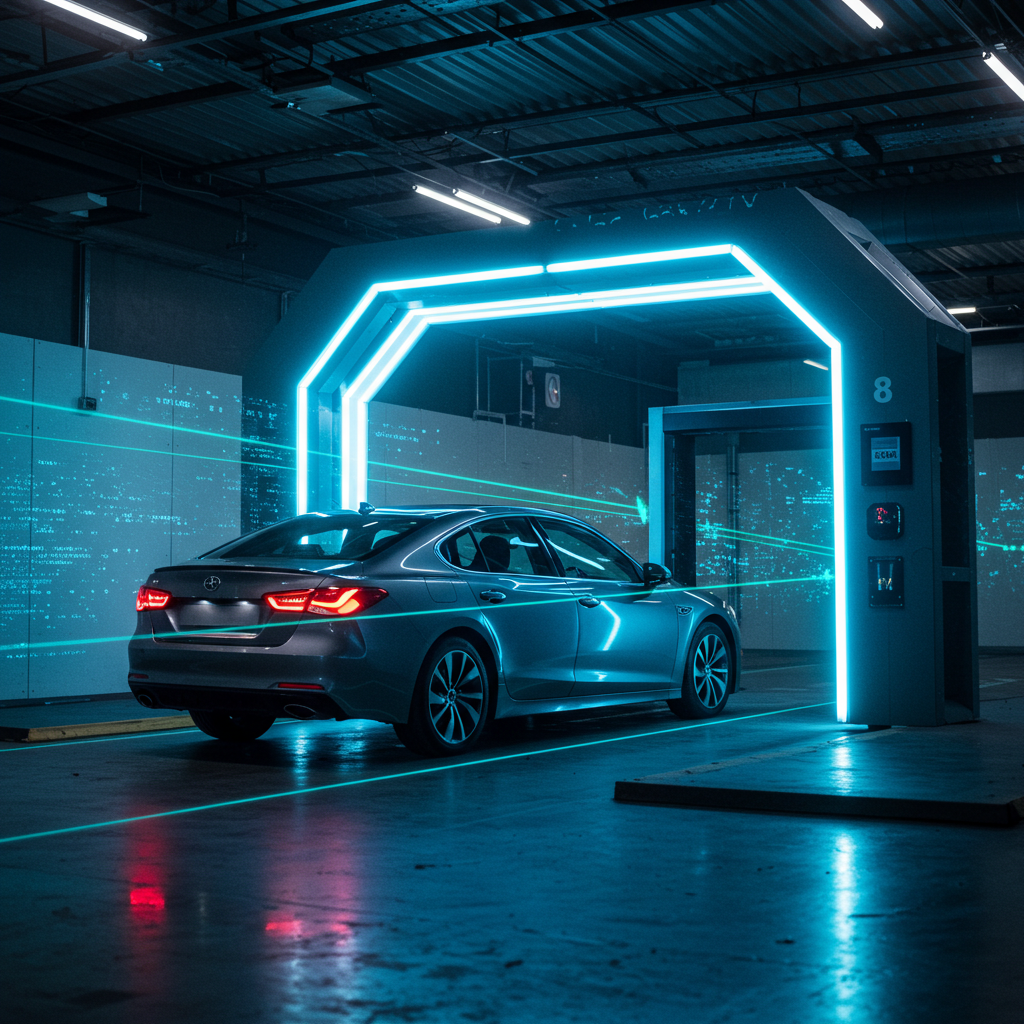For decades, the car rental return process has been a familiar ritual: a hurried walk-around with a clipboard-wielding agent, trying to spot any new dings or scratches under questionable lighting. It’s a system prone to human error and subjective disputes. Now, that is all poised to change. Major industry players, led by Hertz, are moving to replace the clipboard with computer vision, betting that Artificial Intelligence can bring a new level of precision and efficiency to vehicle inspections.
The Technology: From Clipboards to Computer Vision
Hertz is partnering with tech firms like UVeye to install automated, drive-through inspection tunnels at its locations. This technology uses a bank of high-resolution cameras and sensors to perform a complete scan of a vehicle’s exterior in seconds.
The process works in two stages:
- Creating a Baseline: When a car is rented, it passes through the scanner to create a detailed, time-stamped digital “fingerprint” of its condition.
- Detecting Changes: Upon return, the car is scanned again. The AI compares this new scan to the original baseline, instantly identifying and flagging any new abnormalities, from door dings to wheel scuffs.
This shift represents a move from manual spot-checking to comprehensive, data-driven analysis.
The Promise of a Frictionless Process
From an industry perspective, the move to AI-driven inspections promises to solve several long-standing problems. The stated goals are to increase:
- Speed: The return process can be dramatically accelerated, with damage reports generated almost instantly.
- Accuracy: AI can detect subtle damage that might be missed by the human eye, creating a more complete and objective record.
- Transparency: By providing customers with clear, photographic “before-and-after” evidence, the aim is to reduce the “he said, she said” nature of damage disputes.
In theory, this creates a more consistent and streamlined experience for both the company and the customer.
The Human Element: Potential Roadblocks for Renters
While the detection technology is advanced, the ultimate success of these AI systems will hinge on the customer experience that follows an automated damage flag. The shift raises important new questions for the industry and for renters:
- The Dispute Process: What happens when a customer disagrees with the AI’s findings? The efficiency of automated detection must be matched by a clear, accessible, and human-centric process for inquiries. Funneling customers into automated chatbot systems without a clear path to speak with a person about financial matters could create significant frustration.
- New Fee Structures: Will the cost of implementing this sophisticated technology be passed on to the consumer through new “tech” or “administrative” fees tied to damage claims? The transparency of damage detection must extend to the transparency of its associated costs.
- The Impersonal Experience: A key challenge will be to ensure that the efficiency of automation doesn’t create a cold, impersonal system where customers feel they are dealing with an unyielding machine rather than a service provider.
The Road Ahead: Adapting to the New Normal
Hertz’s large-scale deployment of AI inspection technology is a clear signal of where the entire rental industry is headed. As competitors inevitably follow suit, renters will need to adapt. Being diligent in doing your own pre-rental walk-around and taking your own photos or videos remains a wise practice, creating a personal record to supplement the company’s digital one.
Ultimately, the successful integration of AI into the rental experience won’t just be about a better scanner. It will be determined by how well companies pair this powerful automation with robust, empathetic, and easily accessible human support.

